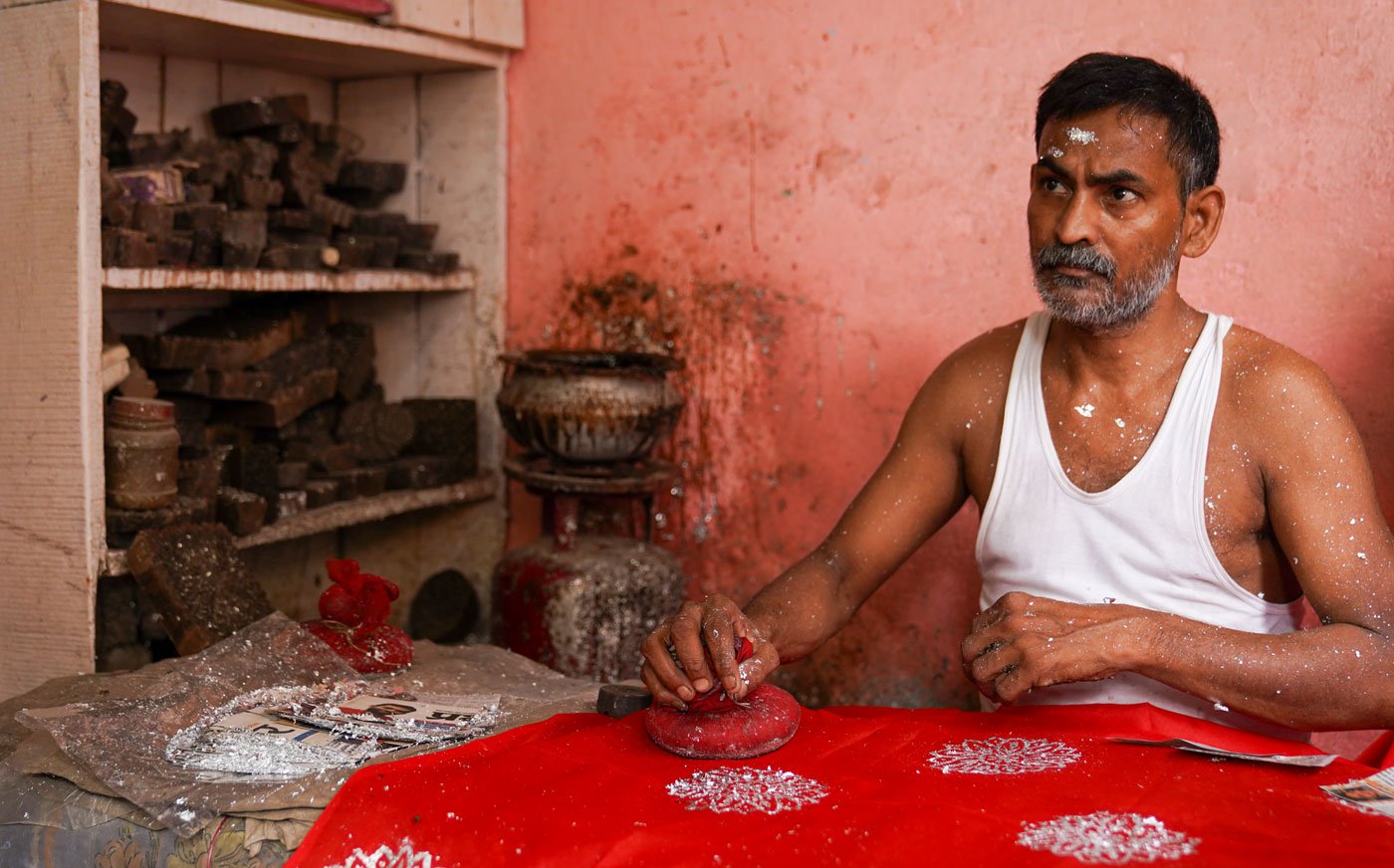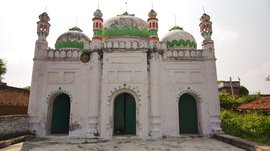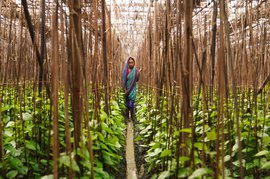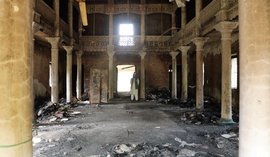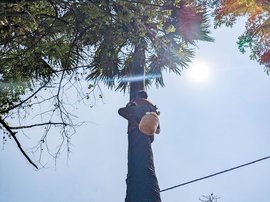Mohammed Asghar's hands move with machine-like precision and they do not stop even while he is talking.
“ Kuch pal ke liye bhi hath ruk gaya to kaam kharab ho jayega [If my hand stops even for a few moments, the work will be ruined],” says the 40-year-old who practises a craft that is said to date back three centuries.
Asghar is a chhapa karigar (manual block-printing artisan) and has been doing this for a decade now. Unlike other block printing craftspersons who print designs on fabric using wooden blocks dipped in dye, he uses a very thin sheet of aluminium to print metal flowers and other designs onto cloth.
The thin aluminium foil called tabak when imprinted on cloth brings a festive look to sarees, shararas , lehengas and other clothes for women. A shelf behind him displays dozens of wooden moulds with intricate designs that transform ordinary clothes into something festive.
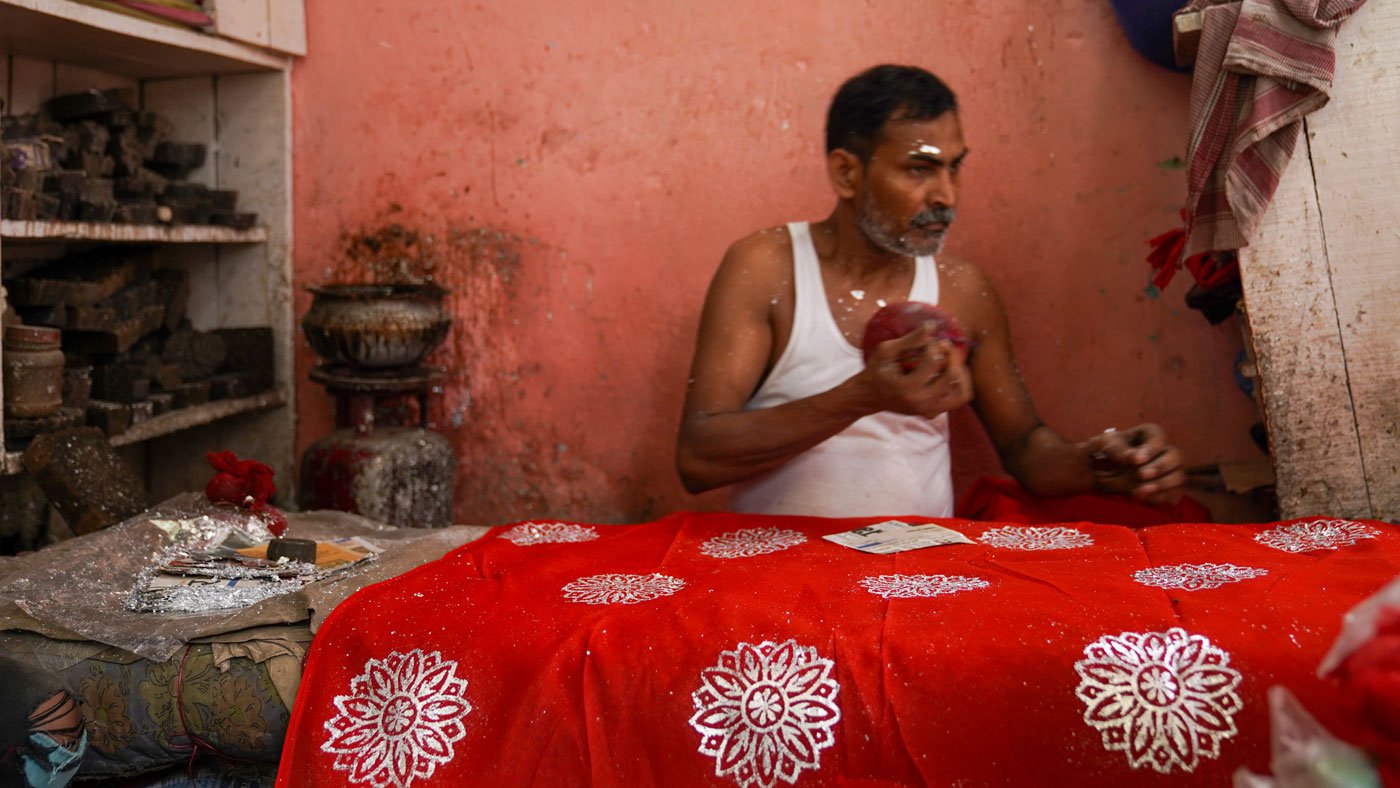
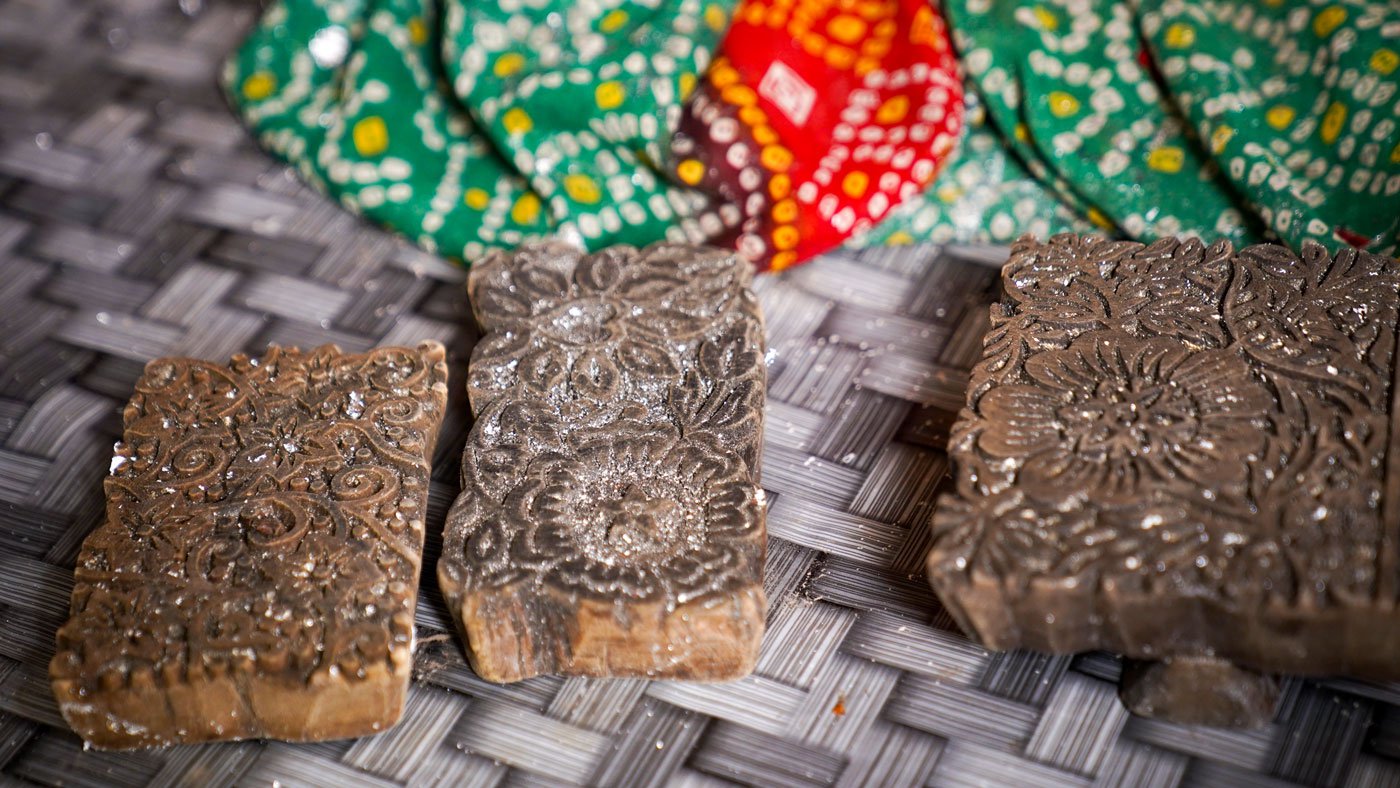
Mohammad Asghar (left) is a chhapa craftsman during the wedding season. The rest of the year, when demand shrinks, he works at construction sites. He uses wooden moulds (right) to make attractive designs on clothes that are worn on festive occasions, mostly weddings of Muslims in Bihar's Magadh region
The town Biharsharif in Nalanda district of Bihar has half a dozen chhapa shops. Like their clientele, chhapa karigars are mainly Muslim and they belong to the Rangrez (dyer) caste, which is listed under Economically Backward Class (EBC) in Bihar. There are an estimated 43,347 of them, according to the latest caste survey conducted by the Bihar government.
“Thirty years ago, I had no [other opportunity to] work. So, I joined this,” says Pappu. “My maternal grandfather would do chhapa . I have inherited this work from him. He passed the time and I am also passing time,” adds the 55-year-old who has been running a chhapa clothes shop for 30 years in the busy and densely populated Sabzibagh locality of Patna, the capital of Bihar.
He says that demand for the craft is fading: “Earlier there were 300 shops in Patna but only 100 are operating now,” and silver and gold printing are not used anymore – aluminium has taken over.
Asghar, who also works at a small workshop in
Sabji Bazar says that 20 years ago,
tabak
would be made in Biharsharif town itself. “Earlier,
tabak
would be made in the city but due to scarcity of labourers,
it is not made here. Now, it comes from Patna,” he says.
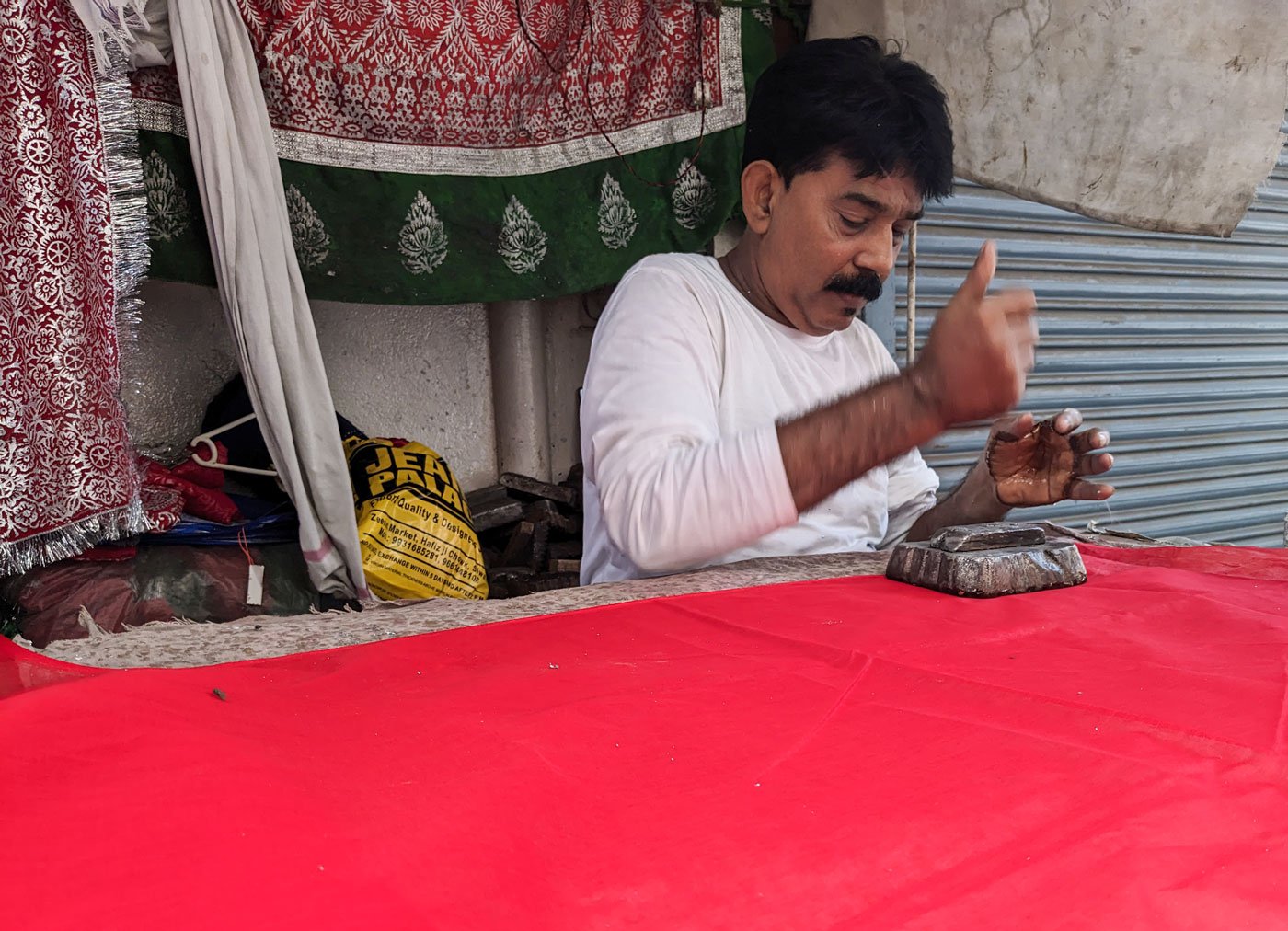
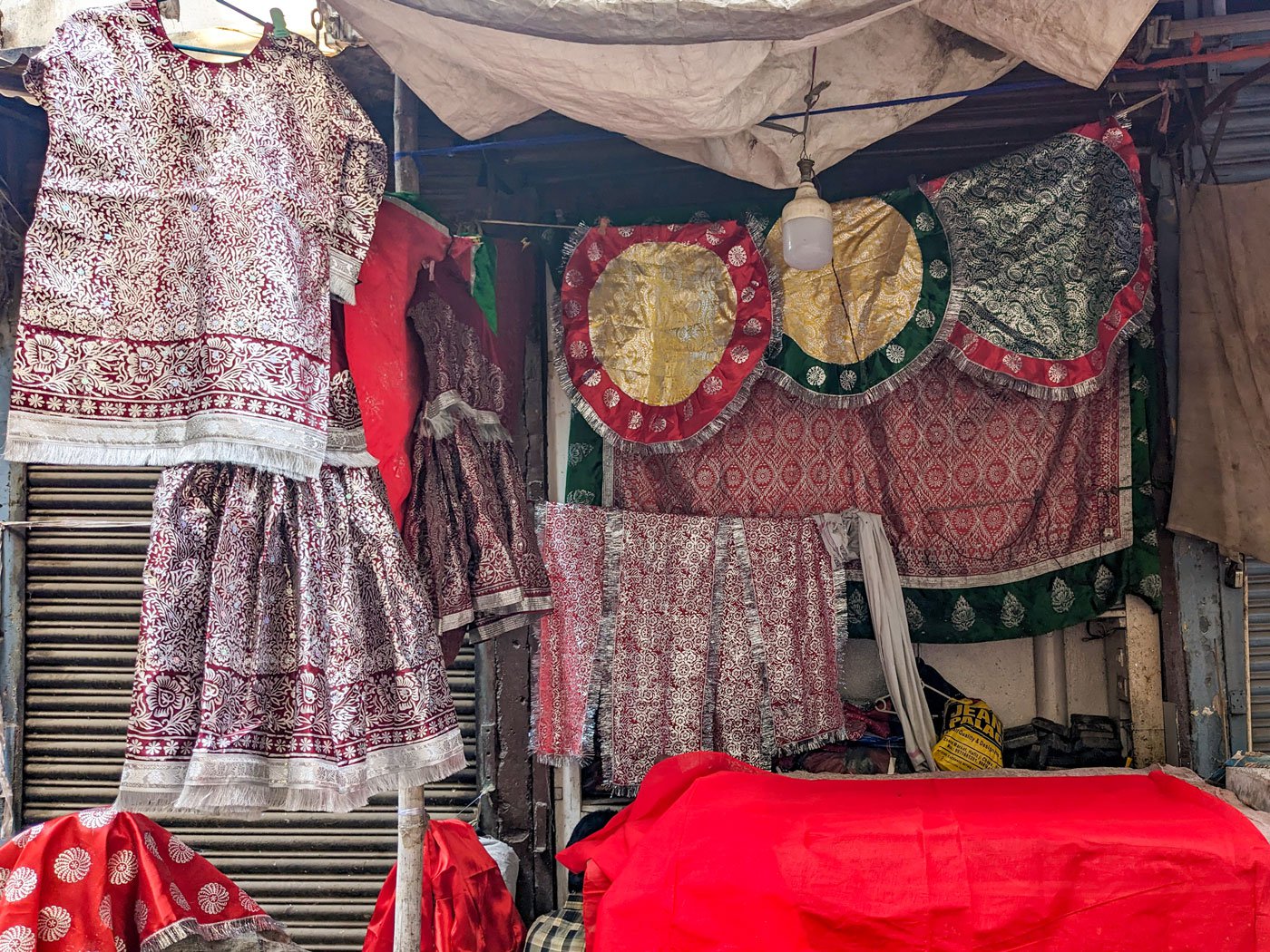
Left: Pappu inherited chhapa skills from his maternal grandfather, but he he says he will not pass it on to his sons. Right: Chhapa clothes at Pappu's workshop in the Sabzibagh area of Patna, Bihar. The glue smells foul and the foil comes off after a couple of washes, so the clothes are not very durable
The star of the chhapa show is tabak , so fine that it starts flying in the slightest breeze, some of it sticking to Asghar's face and clothes. At the end of the day, he has to dust it off and also clean his palm covered in a thick layer of glue. “It takes two hours to remove the glue from my hand. I use hot water for this,” he says.
“The glue dries quickly, so all the processes have to be done very quickly,” Asghar says as he displays the steps to us, starting by rubbing the glue kept in a tin pot onto his left palm. Once his palm is completely covered with glue, he rotates the wooden flower mould on the palm to soak up the glue and then stamps the sticky mould onto the cloth.
Working swiftly, he carefully removes a foil from under a paperweight holding down the wafer-thin sheets, and pastes it on the stamped part, the glue making the foil stick in the pattern of the block.
Once the foil is on the cloth, it is further pressed down with a padded cloth until it is completely stuck. “This has to be done so that the tabak sticks properly to the glue,” he adds.
A delicate process, it is done swiftly, and in a matter of seconds a shining circular shape emerges on the cloth. The newly done chhapa cloth is kept in the sun for at least an hour for the glue to dry properly and the foil to stick permanently.
The karigar repeats this process, working continuously without a pause. The red cloth he is currently printing is a daldhakkan – cloth used for covering bamboo baskets.
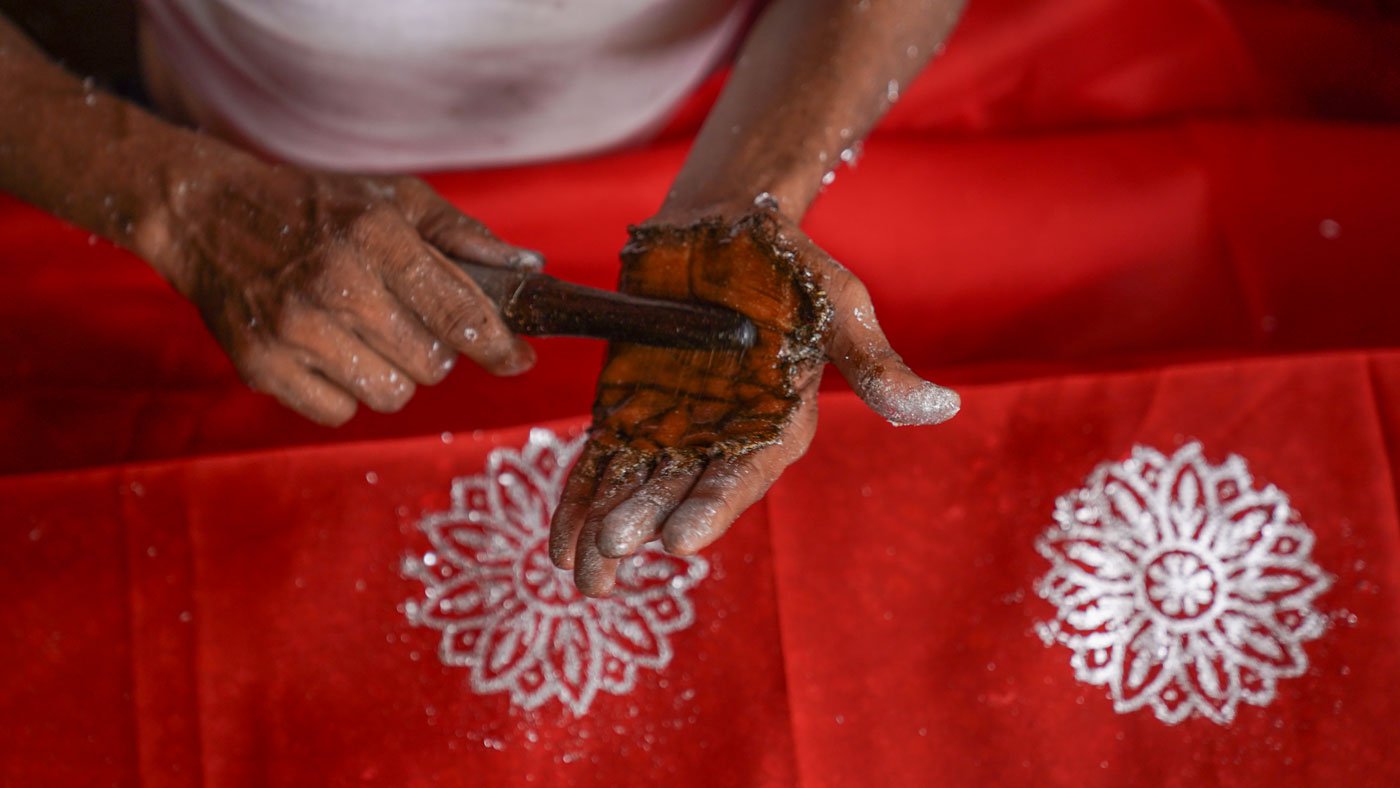
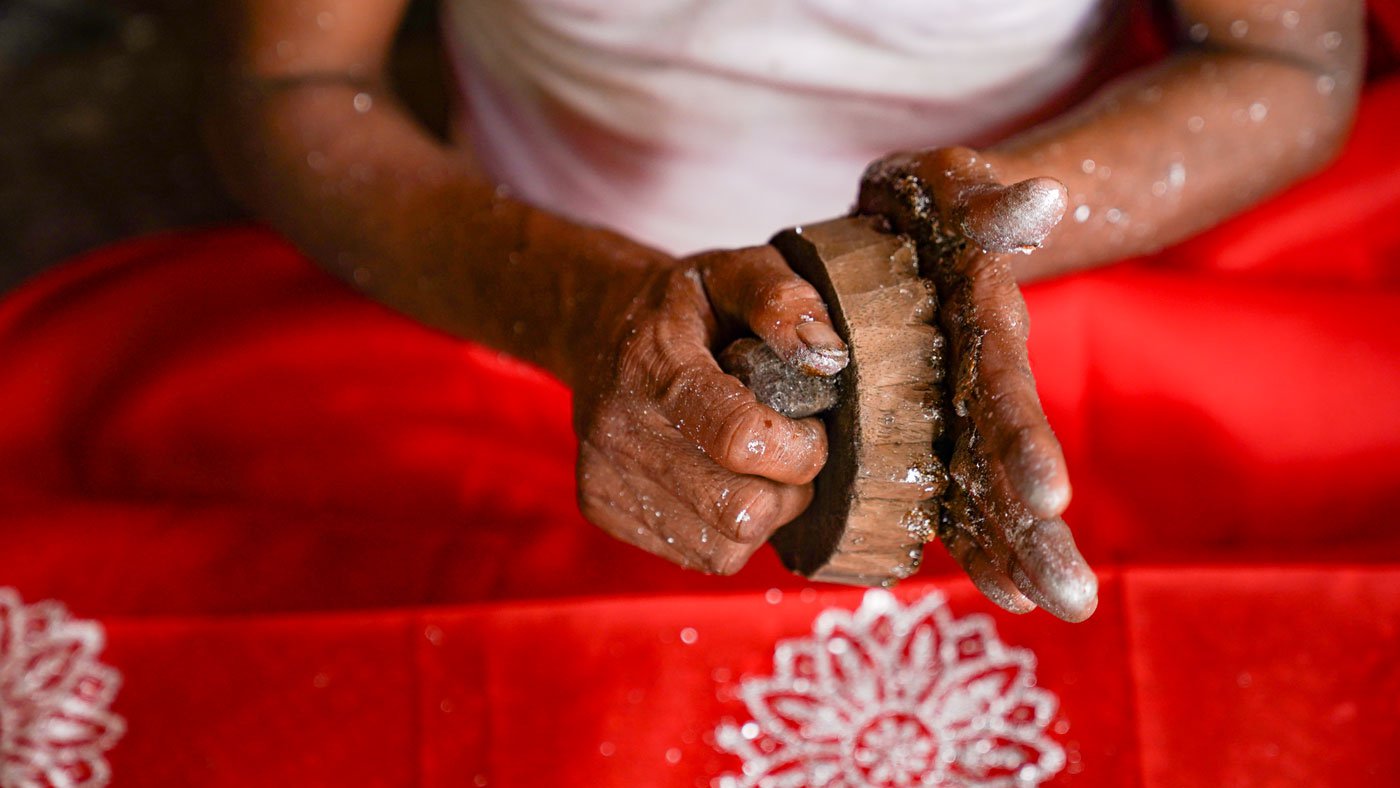
Left: Mohammad Asghar rubs the glue kept in a tin pot onto his left palm. Due to continuous application, a thick layer of glues sticks to the palm and takes him two hours to remove. Right: He rotates the wooden flower mould on his palm to soak up the glue
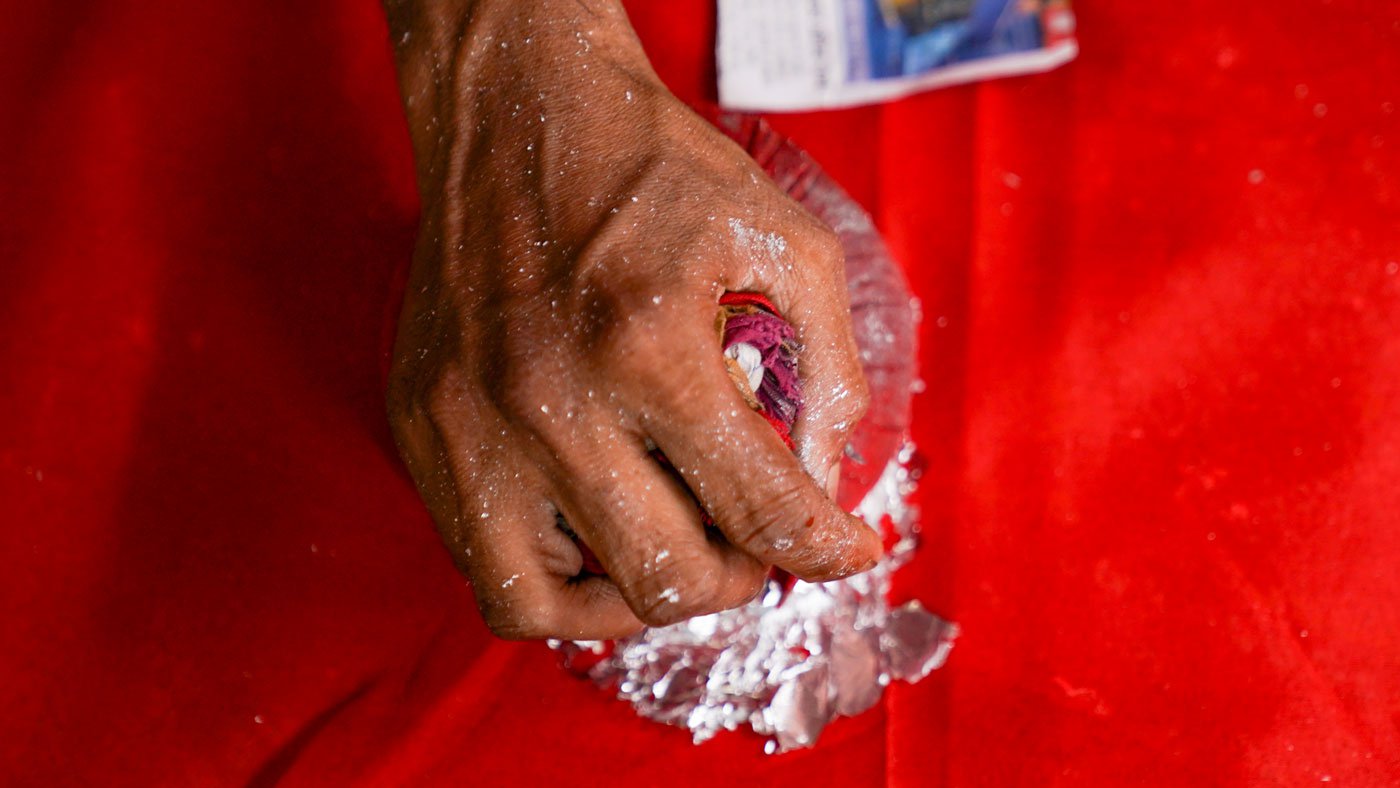
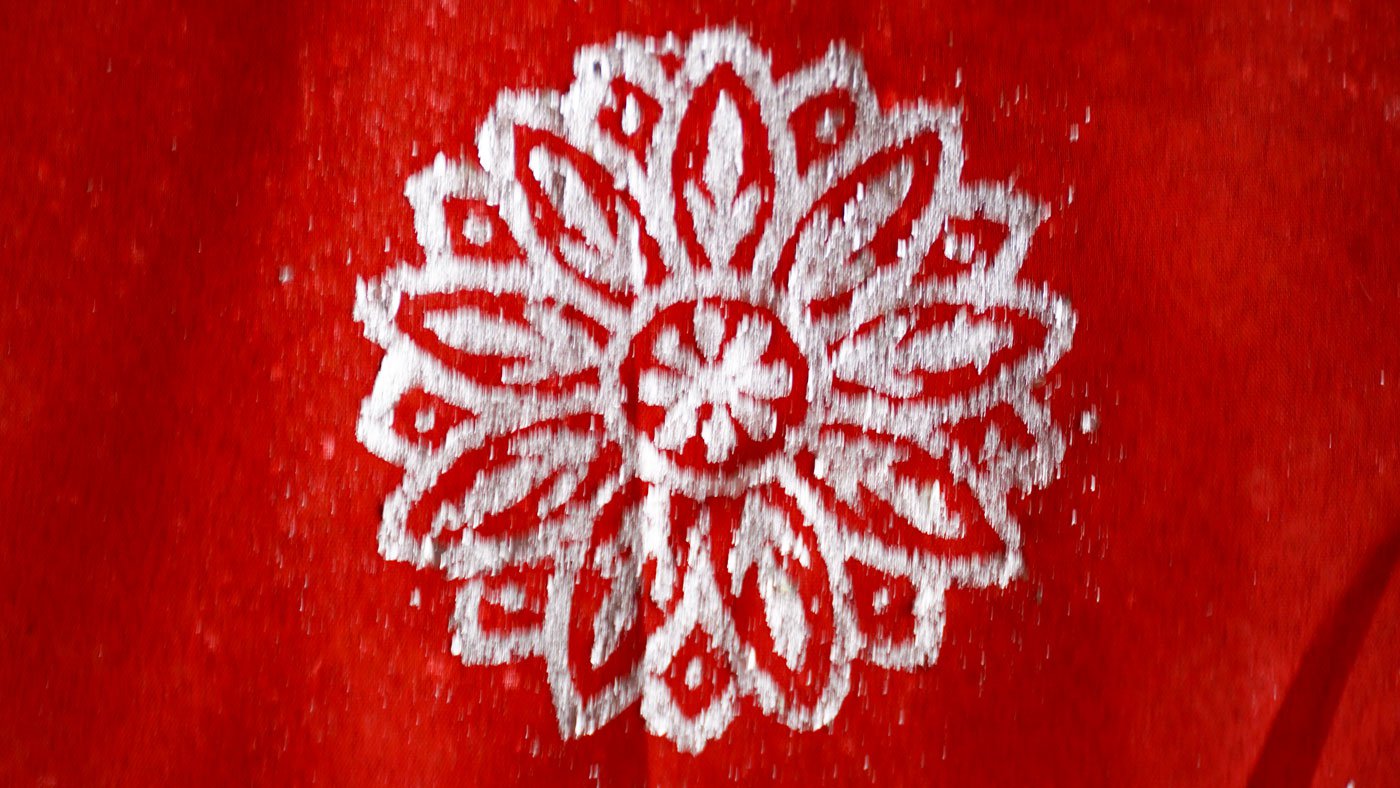
Left: Asghar stamps the sticky mould onto the cloth. Then he carefully pastes the foil sheet on the stamped part and further presses down with a pad until it is completely stuck. Right: The delicate process is performed swiftly and the design appears on the cloth which now has to be laid out to dry in the sun
Aluminium foil sheets of 400 pieces – each between 10-12 square centimetres – cost Rs. 400; a kilo of glue costs Rs.100 to 150. “ Chhapa increases the price by 700-800 rupees,” says Pappu (he prefers to use only this name), a chhapa clothes shop owner. “Customers do not pay that much money.”
Chhapa clothes are traditionally used in the weddings of the Muslim community of Bihar, especially those from the Magadha region in the southern part of the state. It is integral to some customs – the bride and her family must wear chhapa sarees or wedding attire with it, regardless of their social status.
Despite the cultural significance, chhapa clothes are not worn for long. “The glue that is used in this printing has a very unpleasant smell. And then the printing is so weak that in one or two washes the entire aluminium foil comes off,” says Pappu.
After the three-four months of the wedding
season,
chhapa
comes to a standstill,
and artisans must look for other work.
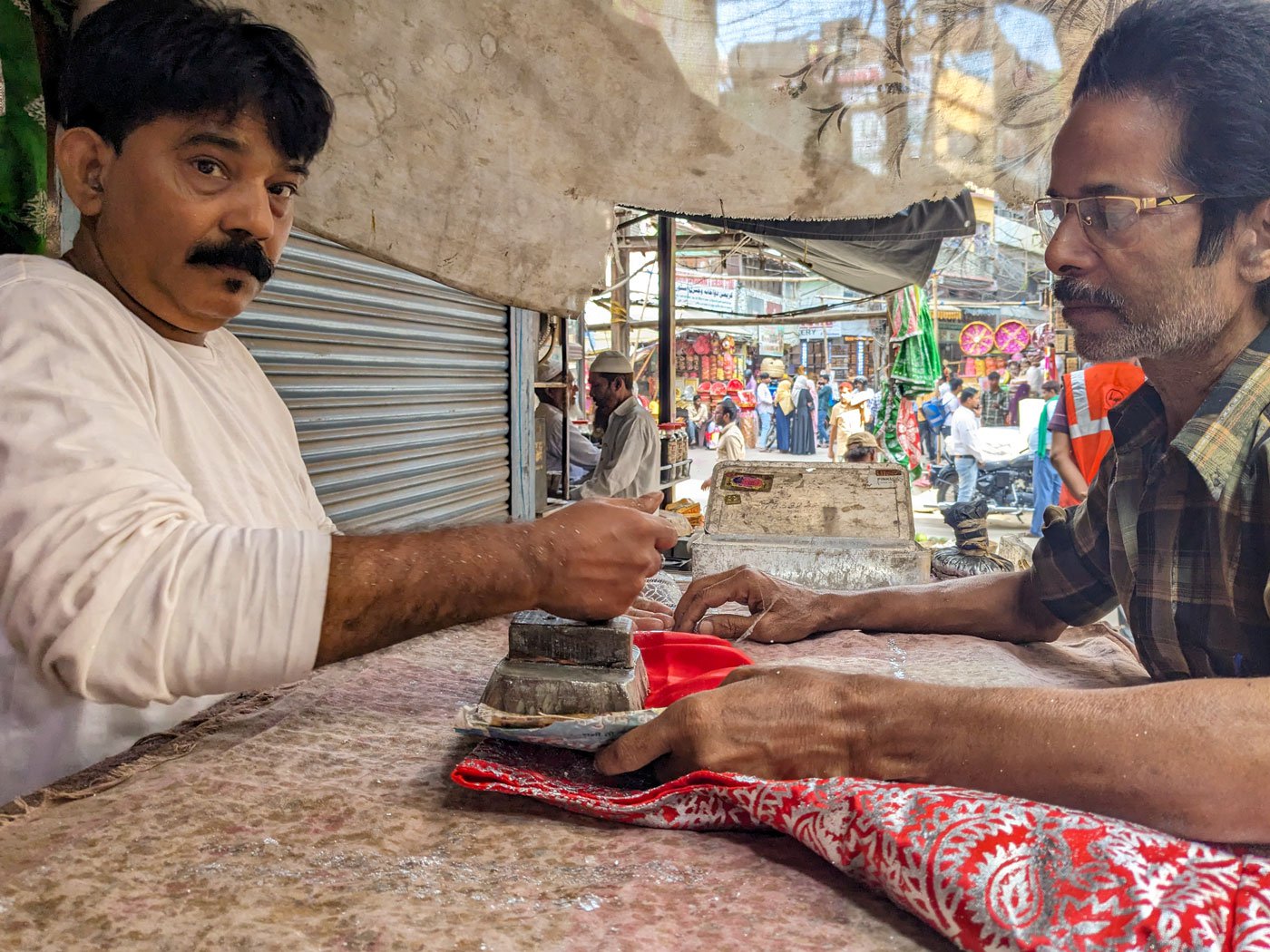
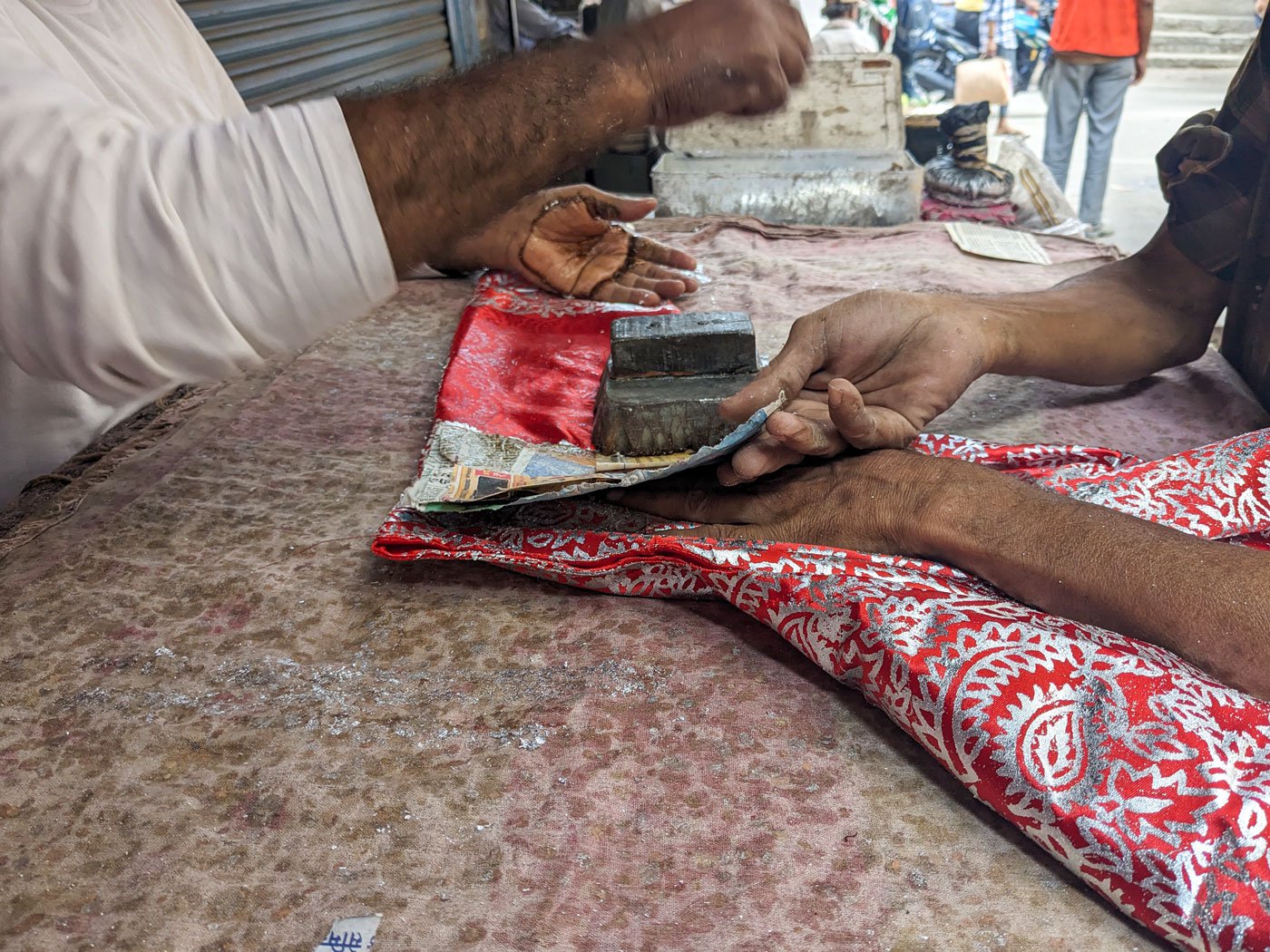
Mohammad Reyaz (wearing glasses) works as a chhapa karigar in Pappu’s shop. He is also a plumber and a musician and puts these skills to use when chhapa work is not available
"I work eight to 10 hours at the shop and complete chhapa work on three sarees,” says Asghar. “I earn around 500 rupees a day for this work, but it is available only for three to four months. When there is no chhapa work, I work at construction sites.”
Asghar lives in Biharsharif town, about a kilometre away from the workshop where he works from 10 in the morning to 8 at night. “To save money, my son brings home-cooked food during lunch,” he says.
For a brief period of five years, he migrated to Delhi and worked at construction sites. Now he lives right here with his wife and their two sons aged 14 and 16, both of whom are in school. Asghar says he is satisfied with his income in Biharsharif and staying with family is a bonus for him. “ Yahaan bhi kaam hoiye raha hai to kaahe la bahar jayenge [I am getting work here, so why would I migrate]?” he tells this reporter.
Mohammad Reyaz works as a chhapa karigar in Pappu’s shop. The 65-year-old has also acquired other skills to ensure a livelihood through the year: “When there is no chhapa work, I work with a [music] band. Apart from this, I know plumbing too. These works keep me engaged throughout the year.”
Pappu says the income from this is insufficient, and it is difficult to sustain his family – his wife and their three children aged between seven and 16 years. “There is little to no earning in this. Till date I have not been able to figure out how much margin I get on a chhapa cloth. Somehow, I just manage to arrange food for my family],” he says.
He is unwilling to pass on the unsustainable
craft to his sons. “
Hum pagal nahi hai
hain jo chahenge ki mere bete is line mein aayein
[I am not insane to wish
that my sons join this business].”
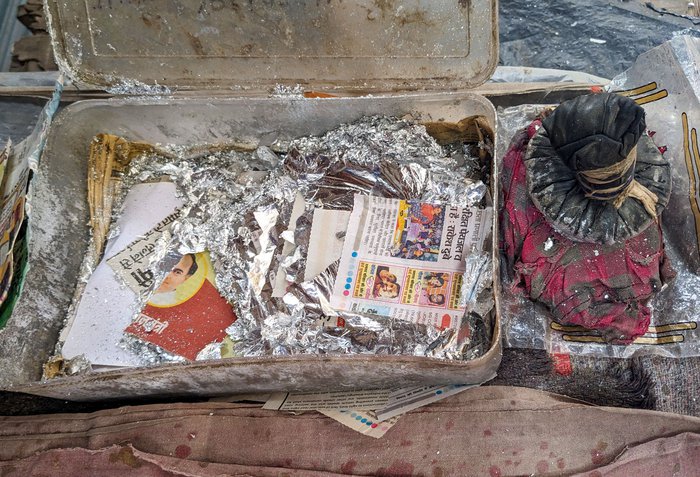
The star of the
chhapa
show is
tabak
(aluminium foil), so fine that it starts flying in the slightest breeze, some of it sticking to the craftsmen's face and clothes
*****
Not much is known about the origins of chhapa and how they came to occupy such an important role in the culture of Bihari Muslims. Francis Buchanan, a surgeon and surveyor in British India, uses the word ‘ chhapagar ’ for artisans doing manual block printing in Bihar.
“It is difficult to trace how the culture of wearing printed clothes in Muslim weddings came to Bihar. But this culture is very much visible among the Muslims of Magadha region of Bihar, so it is believed that it started from that region,” Umar Ashraf, Patna-based history enthusiast, says.
He runs a web portal named Heritage Times and a Facebook page where he documents the lost culture and heritage of the Muslims of Bihar.
The evolution of this craft in the region is attributed to the inbound migration of Muslims in the 12th century to the Magadha region. “Maybe they brought their culture with them of wearing chhapa clothes during weddings, and they continued in Magadha as well,” adds Ashraf.
Chhapa has also returned to the rest of the world: “We have many such examples which show that Bihari Muslims settled in Europe, America, Canada and other countries take chhapa clothes from India to wear in weddings there,” he says.
This story is supported by a fellowship in memory of a trade unionist from Bihar who championed the struggles of marginalised people in the state.
